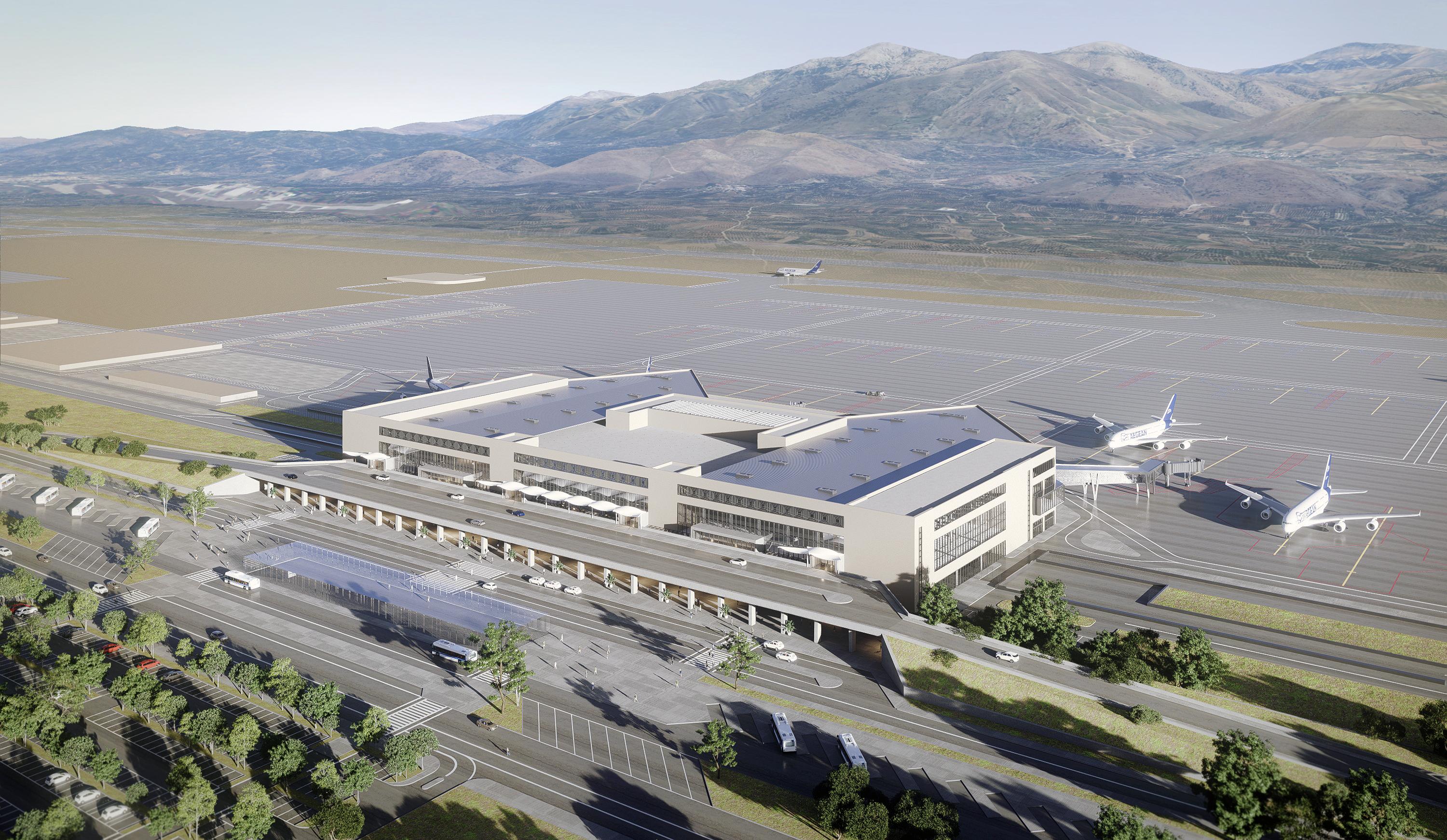01
Aegean sentinel
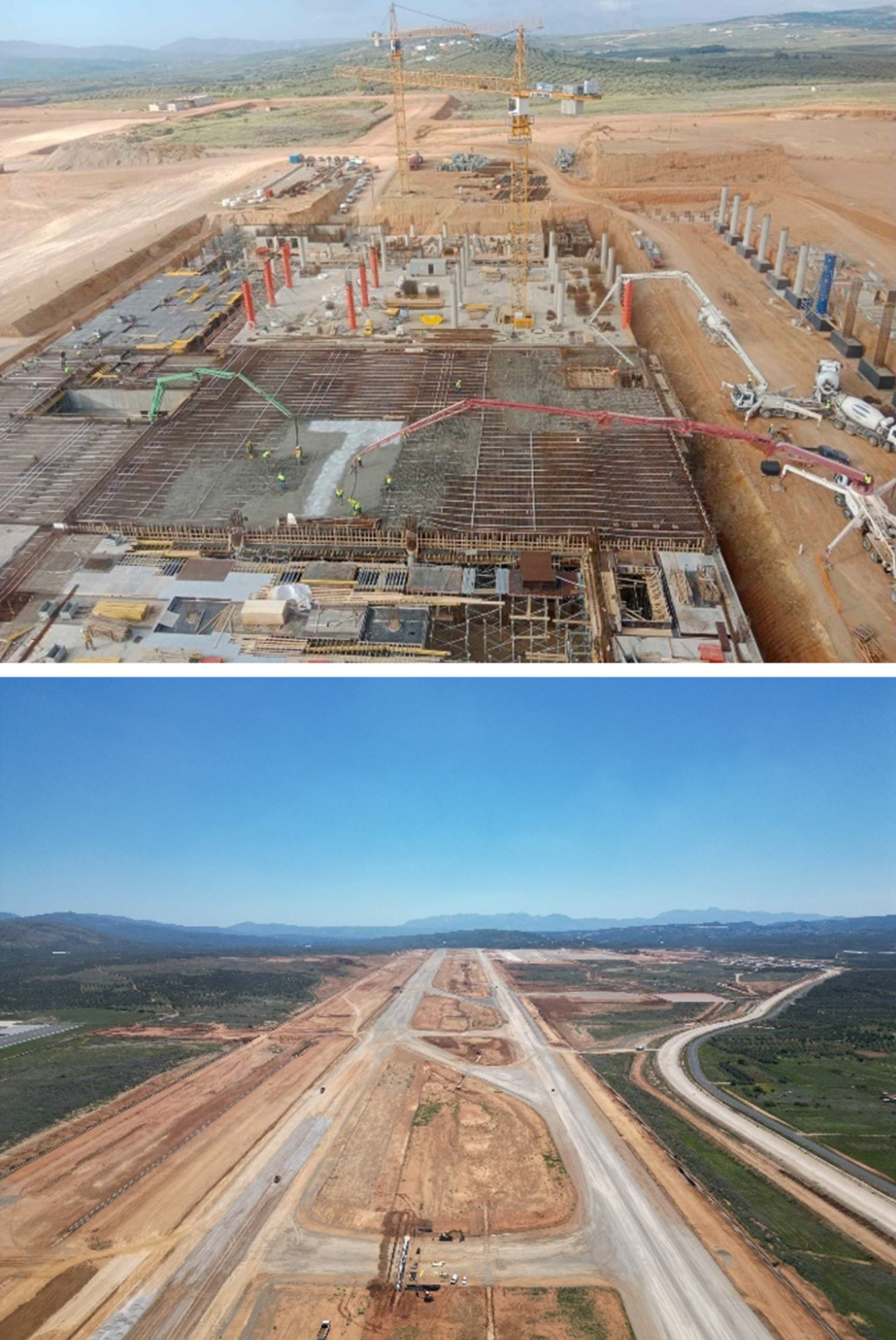
History and legend go hand in hand in Crete, the largest of the Greek islands. With just over 634,000 inhabitants, it is a unique location in many ways (it is not part of any archipelago and the oldest European civilisation, the Minoan, flourished here) and is the setting for some of the most universal classical myths, such as the Labyrinth of the Minotaur and the flight of Icarus.
Due to its location, closing the Aegean Sea to the south, it has been an important geostrategic strategically location for the Mediterranean powers of all ages since antiquity: the Venetians and the Ottomans left their mark on the island's monumental heritage.
"In the midst of the vinous pontoon surrounded by the sea, there is a beautiful and fertile land, Crete. And in it many, innumerable men, and ninety cities" Homer, Odyssey, 8th century B.C.
In addition to the attractions of this cultural and archaeological heritage, with gems such as the Palace of Knossos, there is a natural environment with spectacular beaches, gorges and mountains and Mediterranean landscapes of olive groves and vineyards. Crete is therefore the fifth most visited destination in Greece, which itself ranks seventh in the world in terms of the number of tourists, according to data from the UNWTO (World Tourism Organisation).
To meet the growing demand, the Greek government has promoted the construction of a new airport on the island, designed by Ineco together with the architect Bruce Fairbanks, with whom it has collaborated on numerous airport construction projects for more than 20 years.
In 2019, the concession was awarded to Heraklion International Airport, a joint venture between the Greek state (45.9%), the Greek group of companies GEK TERNA, which includes the construction company TERNA, in charge of the airport works, and the Indian company GMR Airports Limited. Ineco, which had already prepared the Master Plan, began work on the designs of the new airport for TERNA in 2020, and the work is expected to last until the end of the first quarter of 2024.
Located next to the Hellenic Air Force base at Kasteli, 39 km away Heraklion. The new airport will eliminate the congestion problems of the capital's airport, especially in summer, and will be the most modern airport in the country and also the busiest after Athens. It will have capacity for 10 million passengers at the start of operations, expected in 2027, and up to 18 million by 2052, when the first concession period ends.
02
What is new at the new airport
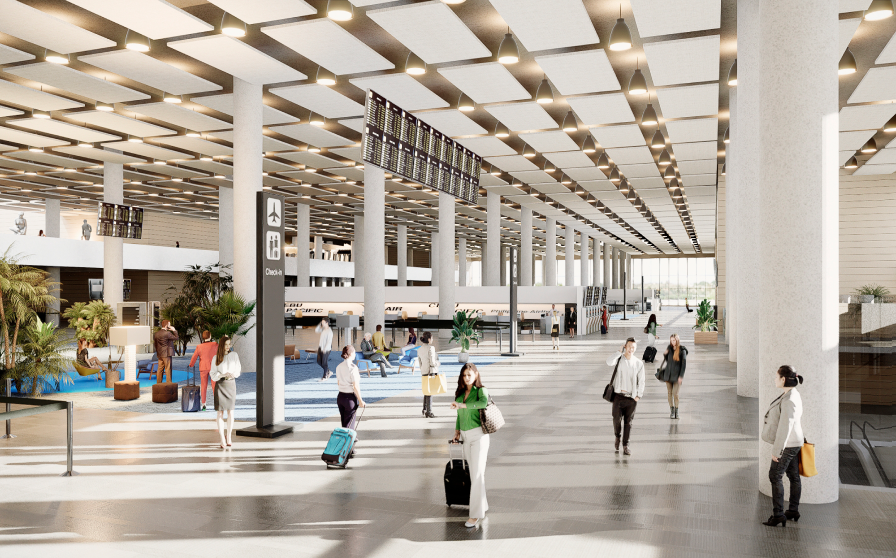
The new airport will cover a total area of some 600 hectares, will have a runway 3,200 metres long, and a terminal building of almost 100,000 m2, which will have LEED SILVER energy certification. It is a green airport with an emphasis on sustainability and CO2 footprint reduction.
It will also include a commercial area, for the future development of which a space of some 70 hectares has been set aside. Furthermore, a museum space dedicated to Cretan history and mythology will be installed inside the terminal building, and archaeological remains found during construction will be exhibited. As for the socio-economic impact of the airport, it will boost a key industry for both the economy of Crete and the country as a whole: tourism.
Main infrastructures
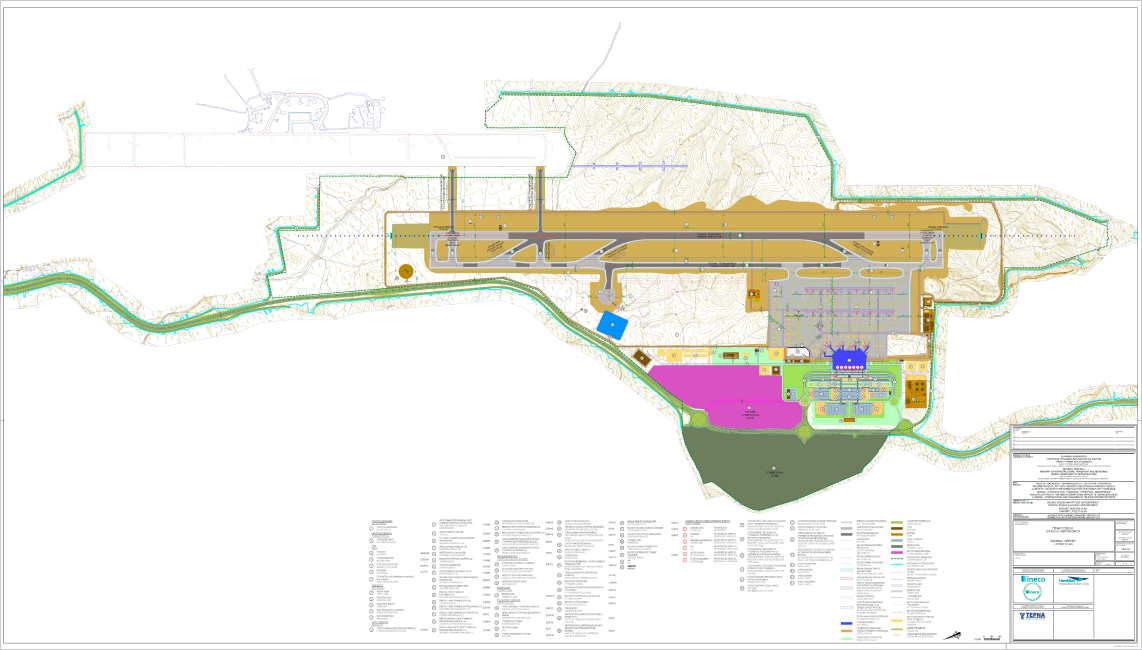
General layout of Kasteli airport as set out in the Master Plan. Photo: Ineco
- 3,200 m long runway, for ICAO Class 4E operations, interconnected by two taxiways to the existing military runway where the 133 Squadron of the Hellenic Air Force operates
- 27 fully self-contained remote parking stands for type C aircraft, all equipped with fuel hydrants and 400 Hz power supply
- 4 type C remote parking stands, which alternatively can accommodate 7 general aviation stands
- 6 MARS type positions (for E-type aircraft operations, or two C-type aircraft simultaneously), push-back assisted, 5 of which are equipped with double telescopic gangways, 400 Hz and pre-conditioned air
- 3 positions for helicopters
- 9 positions for general aviation
- The movement area has an isolated stand (to isolate the aircraft for safety reasons when necessary) and a de-icing facility
- Control tower
- Fire brigade station
- Electrical substation
- Power plant
- Maintenance building
- Handling building
- Police Station
- Fuel farm
- Clean Point
- Wastewater treatment plant
- Water tanks
- Terminal building of almost 100,000 m2
- Access control posts on the air side of the airport
- Parking areas: private vehicles, taxis, and buses
Airport design experts
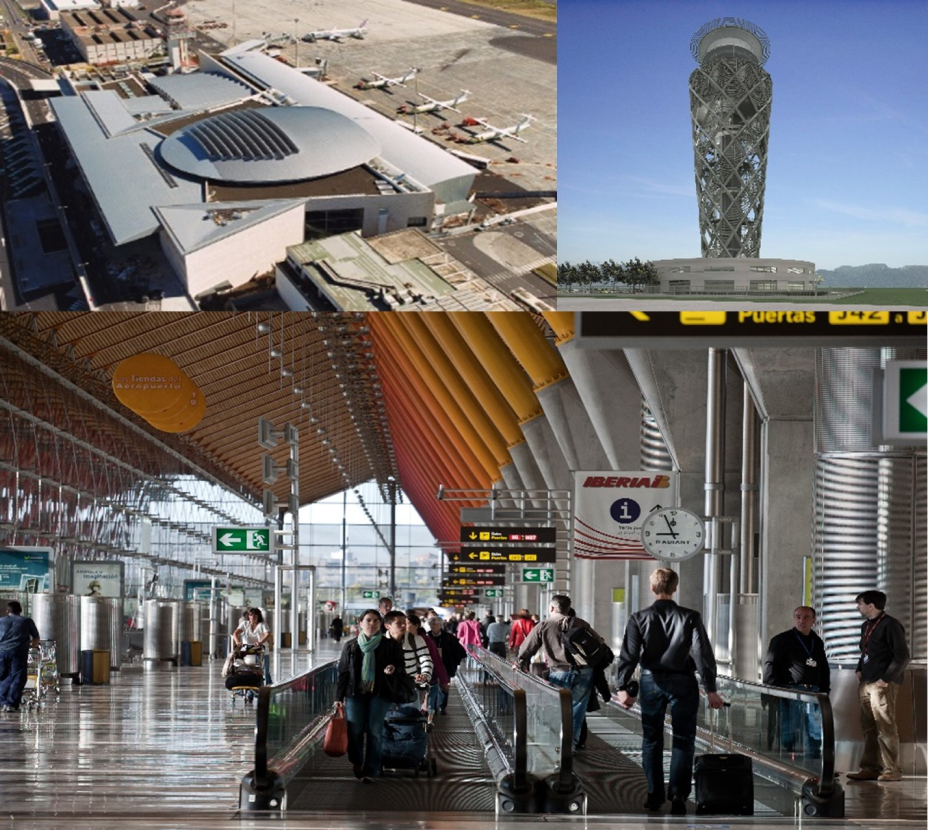
From its first project (the new terminal at Tenerife Norte, in 1996, with the Canary Islands architects N3), to the most recent - (Keflavík, Iceland, from June 2023) Ineco, together with Aena and other Spanish and international companies, has accumulated more than 20 years of experience in design and construction, drawing up master plans, works management and commissioning and operational transition (new terminal at Abu Dhabi, 2014-2017) at airports in Spain and abroad.
In addition to Aena and Aena Internacional, it has collaborated with Spanish companies and prominent architects, such as Bruce Fairbanks (control towers in Madrid and Barcelona, El Dorado in Bogotá), Estudio Lamela (new terminal at Amsterdam-Schiphol airport, T4 at Madrid-Barajas), Norman Foster (new terminal in Kuwait), Ricardo Bofill (T1 at Barcelona-El Prat), etc.
In Spain, it has participated in a multitude of projects of all kinds, from large extensions such as Madrid-Barajas (1999-2006), Barcelona El Prat, Palma de Mallorca, Alicante, Malaga, etc. (1999-2013), to regional airports, newly built heliports (Ceuta and Algeciras), or specialised in cargo (Zaragoza, Vitoria).
Abroad, works are currently underway at the airports of Kuwait, where it is in charge of the project management of the expansion; Jorge Chávez of Lima (Peru), in which is supervising the improvement works; Amsterdam-Schiphol (Netherlands), where it participates in the design of the new terminal; and in Cape Verde, where the company has been working since 2003, it is designing a new international airport on the island of Santo Antão. These are some of the most recent works in addition to those carried out in Jamaica, Italy, the United Kingdom, Poland, Colombia, Mexico, Brazil, Costa Rica, Angola, Namibia, Mali, Kenya, Taiwan, Armenia, Ukraine, Israel...
03
A legendary destination

Samaria gorge. Photo: Hellenic Tourism Organisation
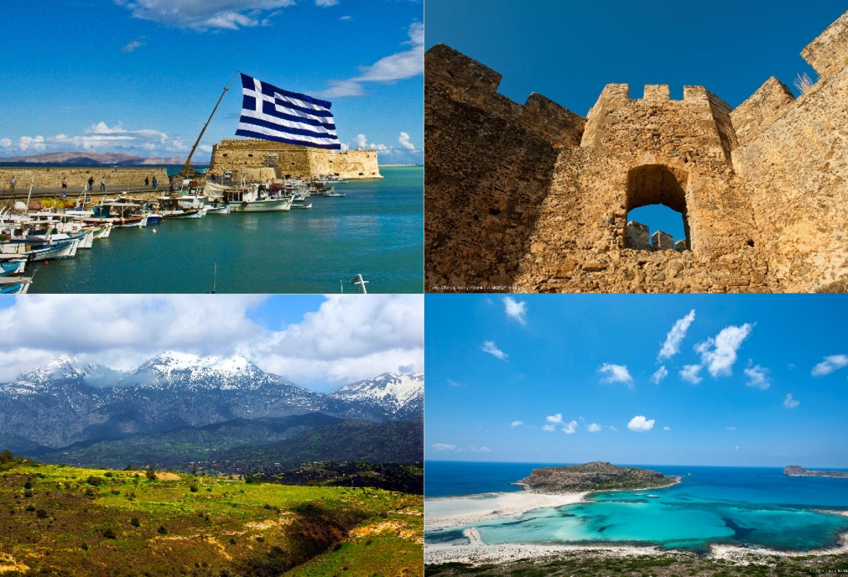
The tourism industry contributes around 10% of Greek GDP. In 2022 Greece received 29.87 million tourists, already very close to the record figure of 31.3 million in 2019, of which 18%, more than 5 million, visited the island of Crete.
Tourism in Greece, in full recovery from the pandemic, is in turn driving the upturn in air traffic: In the first half of 2023, the country led the European Union in passenger traffic growth, according to ACI (Airports Council International) data, with a growth of 14.2%. In 2019, according to the Hellenic Civil Aviation Authority, an all-time high of 65.4 million passengers was also recorded at Greek airports.
These figures give an idea of the strong growth rate of air transport in Greece, where it is essential in a territory of which 19% of its surface area is made up of more than 3,000 islands. Crete, with its 8,300 km², is the largest in the country and the fifth largest in the Mediterranean, but what gives it its unique character is a very ancient cultural heritage in which reality and myth intertwine.
04
Gods and kings

The Palace of Knossos and its millenary frescoes: a furious bull at the North Entrance, young people in procession in the South Propylaea and griffins in the Throne Room. Photos: Roberto Serrano / Ineco
When the British archaeologist Sir Arthur Evans discovered the Palace of Knossos outside Heraklion around 1900, he believed he had stumbled upon the mythical Labyrinth of the Minotaur. What he did find was the oldest European civilisation, (as genetic studies almost a century later showed) the Minoan, which developed between 3,100 and ,1050 BC. What Evans discovered was much more than a palace: the administrative and religious centre of a sophisticated civilisation comparable to the Egypt of the Pharaohs.
Although the written testimonies have so far not been deciphered, the Palace frescoes and other remains revealed a culture linked to the Mediterranean Sea, with rituals such as bull-jumping and the worship of female deities. The partially reconstructed palace now receives half a million visitors per year. There are traces of other Minoan settlements in various parts of the island, including at the village of Kasteli.
"For the first time there has come into view a primitive European civilization, the earliest phase of which goes back even beyond the days of the First Dynasty of Egypt. To this early civilisation of Crete as a whole I have proposed (...) to apply the name 'Minoan'". Sir Arthur Evans, The Palace of Minos, 1921
Sir Arthur called his findings "Minoan" in reference to King Minos, who, according to classical myth, was one of the three sons of the god Zeus and the Phoenician princess Europa, after whom the god, transformed into a bull, abducted her and brought her to the island. Subsequently, Minos commissioned the architect Daedalus to build the Labyrinth to enclose the Minotaur, a half-human, half-bull monster that fed on human flesh. The Athenian prince Theseus managed to eliminate it and get out of the Labyrinth with the help of the king's daughter Ariadne and her famous ball of yarn.
Related to this is another of the best-known myths of classical Greece: that of the flight of Icarus, son of Daedalus. After losing the Minos' favour, the king forbids them to leave the island, but the two manage to fly away with wings built by Daedalus from feathers bound with wax. However, Icarus, ignoring his father, climbed too high, the sun melted the wax, and he ended up falling into the sea.


